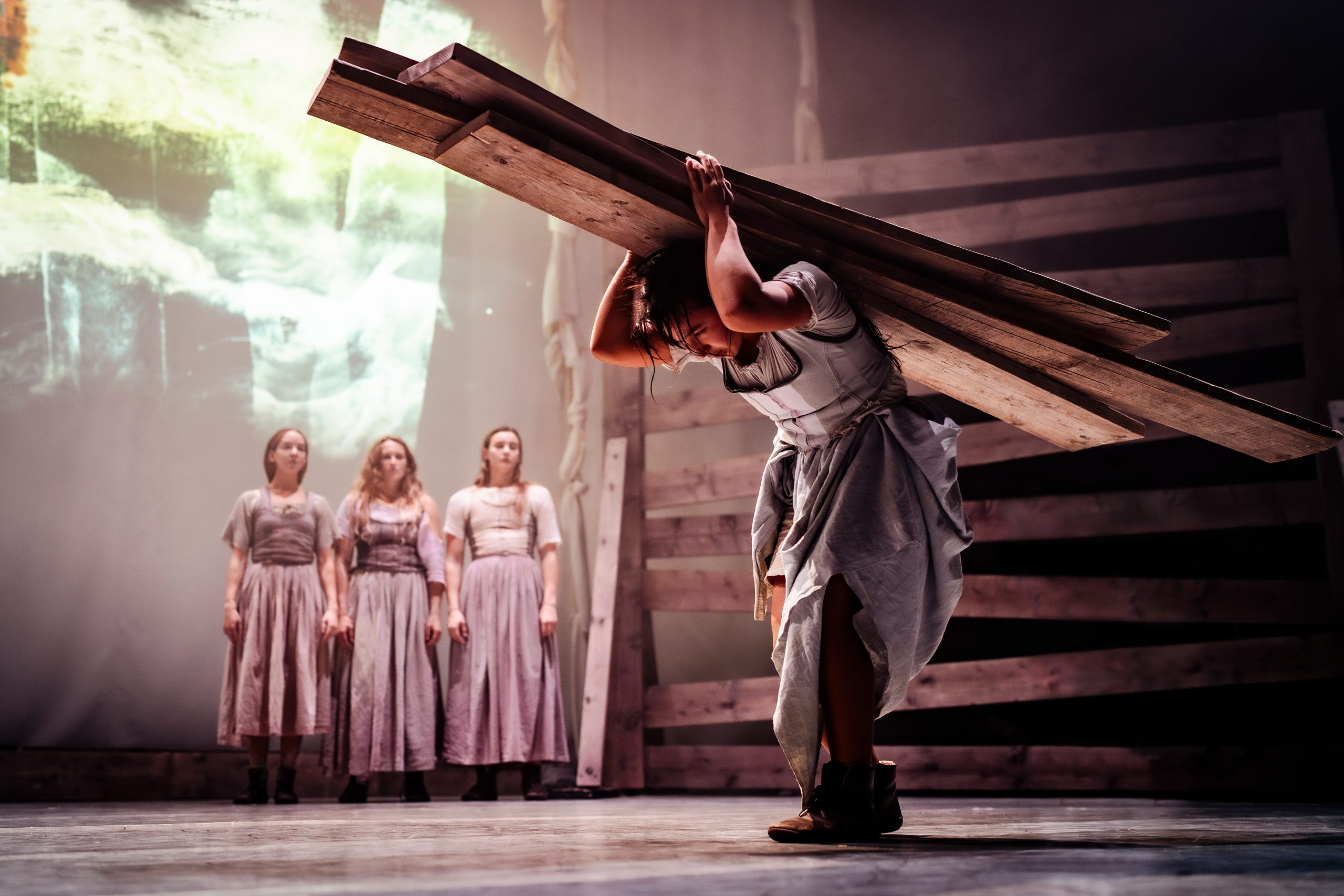Review from: The Peacock Theatre (Sadlers Wells), London; 3rd February 2024
I approach circus-theatre with an element of dread, fearful that the circus tricks will get in the way of a thrilling story or that thrilling circus will be corrupted by shoehorning in a narrative. Fortunately, Alex Harvey and Charlotte Mooney, the directors of Ockham’s Razor, are experienced in skirting the pitfalls and finding the value in the combination.
Their approach to Thomas Hardy’s daunting 500+ page novel Tess of the D’Urbervilles, chosen in part because it is on the school curriculum, is to have two actors play Tess; Macadie Amoroso briefly narrates part of the story after which the physical embodiment of Tess, Lila Naruse, brings the story visually to life alongside the other cast members.
There is very seldom any doubt that the circus and dance skills are included in pursuit of telling the tale rather than as tricks for applause. The use of Cyr wheel by strutting peacock Alec D’Urberville – played by Joshua Frazer – to capture Tess is the nearest to superfluous inclusion but, fortunately, the wheel is used intelligently and imaginatively to convey her encirclement. A particularly elegant inclusion of acrobatic skill is when heartthrob Angel Clare (Nat Whittingham) is taken advantage of by a trio of milkmaids to ford a stream. The emotions and feelings of the characters are excellently expressed with the acrobatic prowess displayed being almost incidental. The final scene with Tess on the gallows brings corde lisse effectively into play, though I missed a clear break-neck move followed by stillness to clarify that she was being hanged. The production is perhaps a little long – did every scene need to become a full choreography? And two small quibbles are that Amoroso’s text was at times difficult to hear due to amplification giving an echo, and the projected words introducing each scene were too scrawled to allow reading in the time allowed.
Nonetheless, the show is successful, and much credit is due to set and costume designer Tina Bicât – who literally wrote the book on Costume Design for Devised and Physical Theatre – and the carpentry team led by Hannah Sharp. Planks are used and adapted for every purpose as carriages, footways and, in an exercise in flat-pack fabulousness, to throw up a three-storey house the cast can climb around. Holly Khan’s soundscape, Aideen Malone’s lighting design, and Daniel Denton’s video design combine well with Nathan Johnson’s choreography to convey Hardy’s bucolic Wessex, a large pastoral landscape traversed slowly in the pre-industrial era.
Of the six physical performers in the company of seven, two are graduates of the National Centre of Circus Arts, one each of Dance City and London Studio Centre, one from the Ecole Supérieure des Arts du Cirque in Brussels, and one has a PhD in Chemistry. Crucially they – and Harvey and Mooney, who both studied at Circomedia – have CVs that testify to their enthusiasm to explore new areas and take risks. Work of this quality of imagination and collaboration depends upon such nurturing experience.
Pupils studying Tess of the D’Urbervilles will easily be able to grasp the key elements of the story in the narrative, whilst the physical portrayal and scenic, sound and lighting design enable and encourage a deeper insight into the emotions at play and Hardy’s world. We really sense that forces of human nature and of politically shaped circumstance, beyond our immediate realisation, influence our actions and their consequences.



